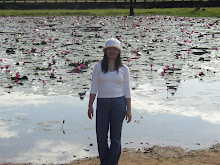To wade in water is how you discover Cebu










Cebu is one of the bigger islands that make up the Visayas region, central of the three main Philippine island groups. The other two are Luzon in the north and Mindanao in the south.
As an island it is only 22 miles tho it is 8x bigger than Singapore and 5x the size of Hong Kong. Known before as 'Sugbu', which means to wade in water, this island province has metamorphosed as the queen city of the south. There were some historical accounts that attest that Cebu has been a major trading port between the Indonesians and Malaysian tribal chiefs and the Chinese, 300 years before the Spaniards set foot and conquered it.
The island province does not have very good soil for agriculture so corn is the main staple (as it requires less water) and it receives very little rainfall throughout the year. This is one of the reasons why Cebu has grown to become one of the best places to go and have a holiday because of this relatively good weather all year round.
Cebu boasts of so many nice islands and beaches surrounding the big island. Some of these islands are Mactan (which is divided into Lapu Lapu City and Cordova), Moalboal, Camotes (or Potato), Bantayan and Malapascua. These islands boast of white sand beaches and crystal clear waters. Be sure to drive down towards one or all of these islands when you visit Cebu or go on a boat ride for an island hopping experience.
Cebu is well known for two stuff: mangoes (the best ones come from the town of Guadalupe) and guitars. 'Bisaya' is the language spoken by most Cebuanos, and they prefer to speak in English rather than Tagalog. So tourists who go to Cebu will have no difficulty conversing with the Cebuanos, even in their halting English.
Cebu is also well known for its churches and four centuries of Spanish occupation left so much influence behind in terms of architecture of churches, houses and buildings to the way of life of Cebuanos.
Above are some of the pictures I took while Mom and I were there last week (8-11 August 2007). Enjoy!


0 Comments:
Post a Comment
<< Home